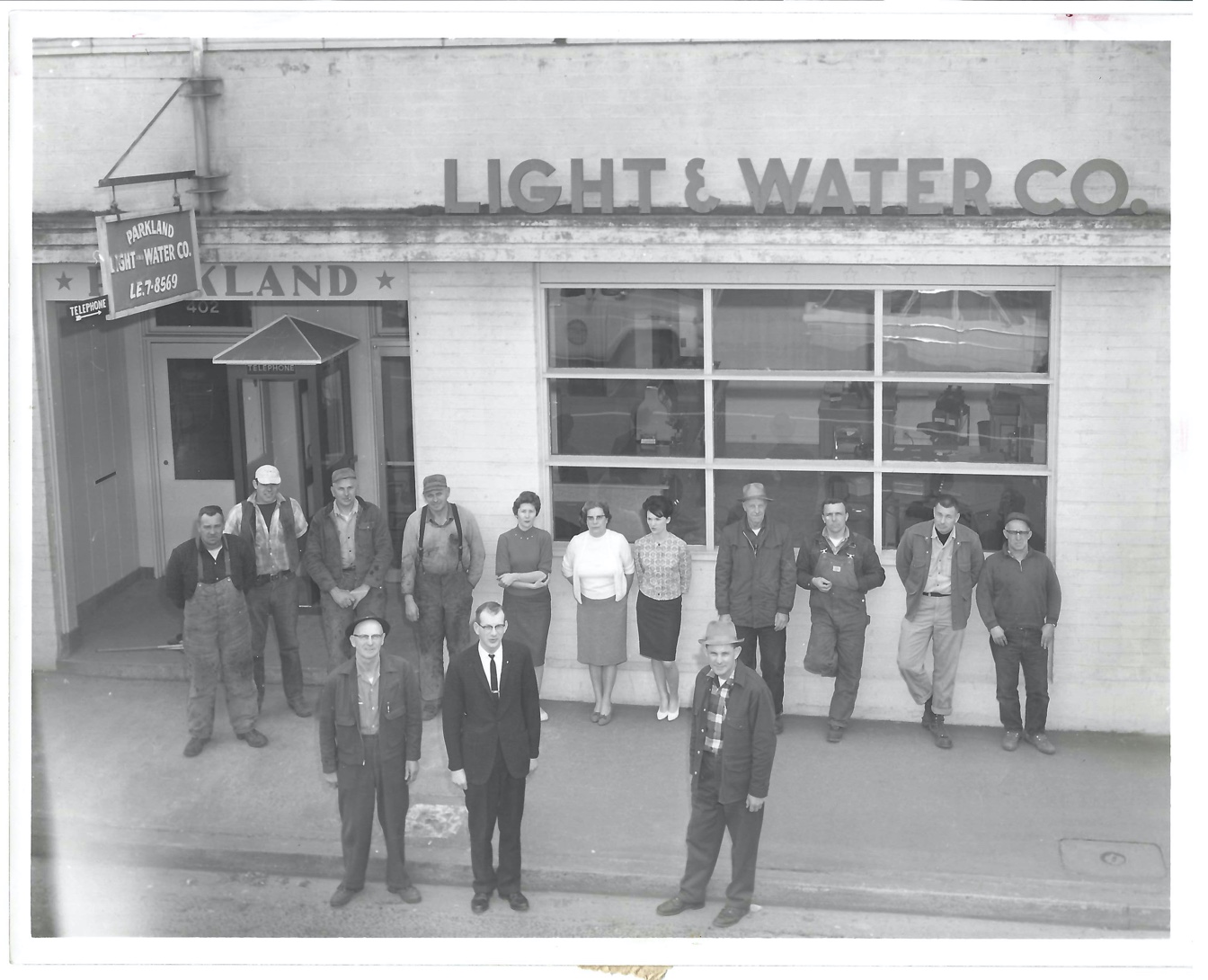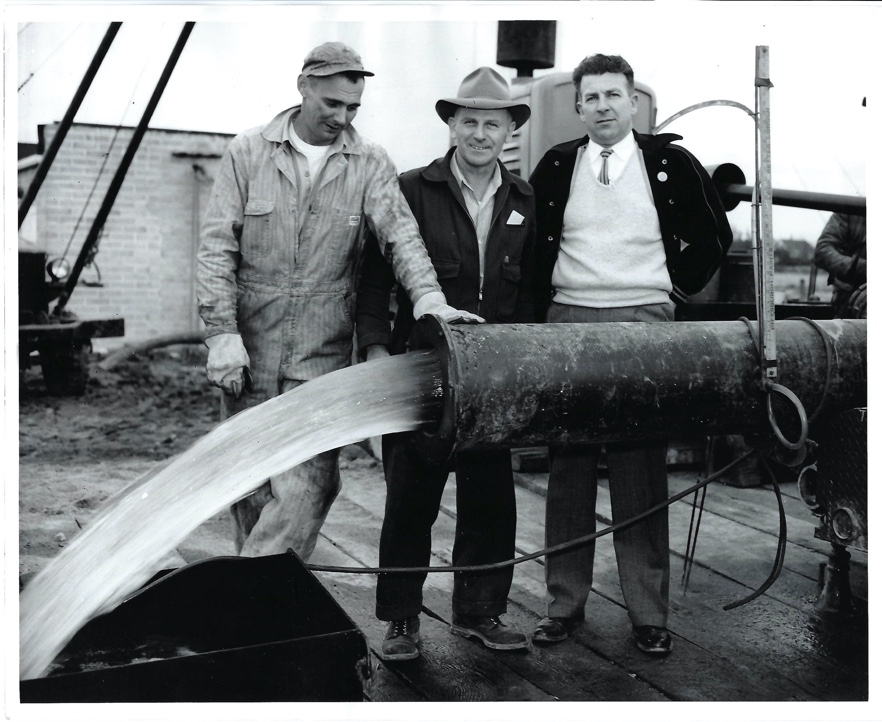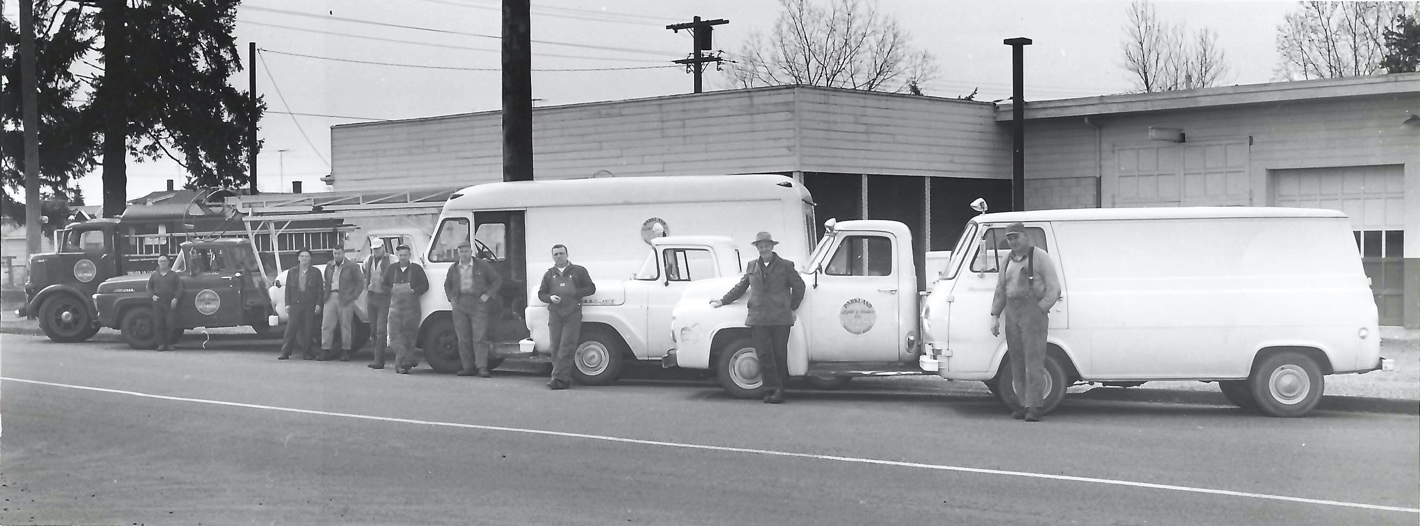History

In 1914, forty-one original members came together to begin building the framework of the entity that became Parkland Light & Water Co. It had been only 25 years since Washington became the 42nd state in the union. What was to become the service territory for PL&WCo was mostly farmland surrounding what was then the Pacific Lutheran Academy/College. As the area began to grow from the original wilderness to the urban area we have today—and as Pacific Lutheran Academy with 33 students grew into a college and then a university with 3,500 students—so, too, did PL&WCo grow along with them.
By the early 1920s, membership in PL&WCo had grown to about 100. As waves of immigrants moved into the area, businesses and development followed. By the early 1930s, membership had grown to more than 300.
In the 1930s, technology and experience began to change how the mutual built its infrastructure. The original standard-use wooden water mains changed to cast-iron pipe, which was buried at a depth of three feet—the standard depth today. Electric standards also changed. Original connections to the mutual electric system had been at the 120-volt level for lighting and a separate 240-v connection for power. This gave rise to the phrase “Light and Power” company. The 1930s also saw the rise of free community benefits to the membership in the form of fire hydrants and street lighting paid for by PL&WCo.

During the late 1940s and throughout the 1950s, the Parkland community followed a changing and uneven growth pattern. Growth came about with the help of Pacific Lutheran College, military families, and small business establishments. Unevenness of growth was a result of the population’s quick rise in the late 1940s through the mid-1950s. Through the late 1950s, the growth gave way to a more settled period as far as influx of new residents. Businesses in the community enjoyed their golden age through the mid-1950s, but a gradual decline began in the late 1950s as the nature of the customers changed. Parkland Light & Water Co. continued to build its infrastructure throughout this period to meet rapid growth and plan for future growth.

As Parkland Light & Water entered the 1960s, the company that started 50 years earlier began to create electric growth by encouraging developers to construct buildings that used electric heating. PLW&Co encouraged new construction to build all electric homes and businesses by offering rebates for such construction. New businesses were offered these incentives to use electricity as their main heating source. The new Washington High School also was offered the rebate. Pacific Lutheran University, which doubled its physical facilities with the addition of 11 major buildings between 1963 and 1971, was another target for rebates.
In the 1970s, Parkland Light & Water Co. grew to more than 3,000 power customers and 4,000 water customers and employed 17 people. All new power installations were scheduled to be placed underground, and the program began placing the entire electric system underground during a 20-year period. It actually took 30 years, but the 1970s saw the start.
As the cooperative moved into the 21st century, the board and general manager strategically positioned the mutual to meet the regulatory, political and environmental challenges ahead in the 2000s.
Today, PL&WCo purchases 100% of its power from the Bonneville Power Administration (BPA). BPA is a Federal Agency created in 1937 to sell power generated by dams on the Columbia River system. It provides some of the lowest cost power available in the country. PL&WCo owns one substation and part of a second substation is shared with Elmhurst Mutual Power and Light, a neighboring mutual electric utility. The power purchased from BPA is distributed from the substations through the electric distribution wires owned and maintained by PL&WCo. Water for PL&WCo is pumped from 12 wells, all owned and operated by the company. Five water storage tanks hold over five million gallons of water for fire and peak water demand.
PL&WCo has 31 employees who work to serve 4,684 households/businesses with electricity and 11,704 households and businesses with water. This translates to 113 million kilowatt-hours of electricity and one billion gallons of water delivered annually.
The administration of your mutual cooperative continues to build on the 100-year foundation of “Owned by Those We Serve.” The mission of the Parkland Light & Water Co.—a member owned nonprofit mutual corporation—is to provide reliable and efficient service at the lowest cost, commensurate with sound financial and management principles, and to adhere to the articles of incorporation and the bylaws of our mutual corporation.
